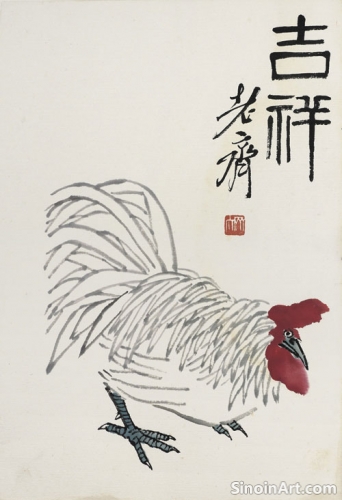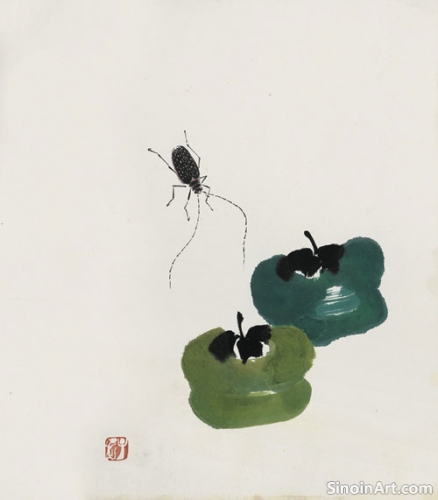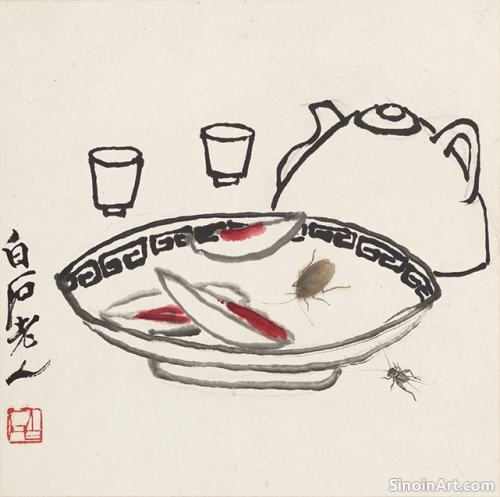The Ink of Xieyi: A Palette of Grays
|
Ink is the lifeblood of Xieyi painting. More than just a medium, it's the primary means of expressing emotions, capturing form, and conveying the spirit of the subject. Unlike the vibrant colors of Western art, Xieyi painting relies on the subtle tonal variations of ink, from the lightest washes to the deepest blacks. This monochrome palette, far from being limiting, offers a vast range of expressive possibilities, allowing artists to create truly captivating works.  The process of preparing ink for Xieyi painting is an art in itself. Traditional Chinese ink comes in the form of a solid stick, which is ground on an inkstone with water. This process allows the artist to control the consistency and concentration of the ink, creating a personalized palette that varies from thin washes to thick, black strokes. The artist will often spend time preparing ink before beginning their painting, reflecting the emphasis on the process itself.  The tonal variations of ink are essential to creating depth and dimension in a Xieyi painting. Light washes are used to create delicate textures and background details, while darker tones are used to define forms and create contrast. By carefully controlling the amount of ink on the brush and the amount of water added, the artist can create an infinite range of shades between black and white, allowing for the creation of a dynamic range of tones.  The application of ink in Xieyi is not simply about filling in spaces; it’s about conveying movement, energy, and emotion. Artists employ various techniques, such as dry brush strokes, wet washes, and ink blending, to create a dynamic interplay of light and shadow. The use of dry brush technique creates texture and allows for a more abstract representation. The use of wet washes allows for blending and a more ethereal effect. In addition to tonal variations, the texture of ink plays a crucial role in Xieyi painting. The consistency of the ink, ranging from thick, viscous ink to thin, watery washes, creates different textures and effects on the surface. Mastering the control of ink texture is crucial for creating a dynamic and engaging artwork. It requires an understanding of the ink itself and its unique qualities. The mastery of ink is at the heart of Xieyi painting. It’s a testament to the artist’s skill, a powerful means of conveying emotion, and the essence of the subject through the subtleties of black and white. This seemingly simple medium becomes an infinitely versatile tool in the hands of a skilled artist, allowing for a rich and expressive artwork. The ink isn’t just a color; it’s the soul of the painting. |
Tag : Xieyi Ink Painting, Chinese Ink, Ink Wash Techniques, Brush and Ink, Chinese Monochrome Painting
Related information
- The Enduring Appeal of Xieyi Painting
- Contemporary Xieyi Artists to Explore
- Xieyi Painting and the Use of "Contrasting Ink"
- The Concept of "Qing" in Xieyi Painting
- Xieyi Painting and the Depiction of Landscapes
The enduring appeal of Xieyi painting stems from its emotional and intuitive power, achieved through personal expression, spontaneity, suggestive imagery, and the pursuit of essence, connecting with viewers across cultures, and inspiring contemplation, tradition, and a deep understanding of the human experience.
Exploring the work of contemporary Xieyi artists reveals the ongoing evolution of this tradition, with artists incorporating abstraction, exploring social and political issues, experimenting with new techniques, and maintaining a connection to its core principles, thereby expanding the boundaries of the art form and ensuring its continued relevance in the modern world.
"Contrasting Ink" (nóngdànmò) in Xieyi uses both dark and light ink strategically to create depth, volume, texture, and atmosphere through visual contrast, with dark ink creating boldness and light ink adding distance and subtlety, requiring skilled blending to create tonal gradations, expressive depth, and nuanced interplay of light and shadow.
"Qing" (feeling) is a fundamental concept in Xieyi painting, emphasizing the importance of artists imbuing their work with personal emotion and genuine expression, requiring sensitivity, observation, and technical skill to convey feelings through brushstrokes, composition, and connecting with viewers on a deeply human level.
Xieyi landscapes (shānshuǐ) emphasize grandeur, depth, and qi, using negative space and suggestive brushstrokes to capture the essence, atmosphere, and inner vitality of the natural world, and expressing the artist’s connection to nature and understanding of the Tao.